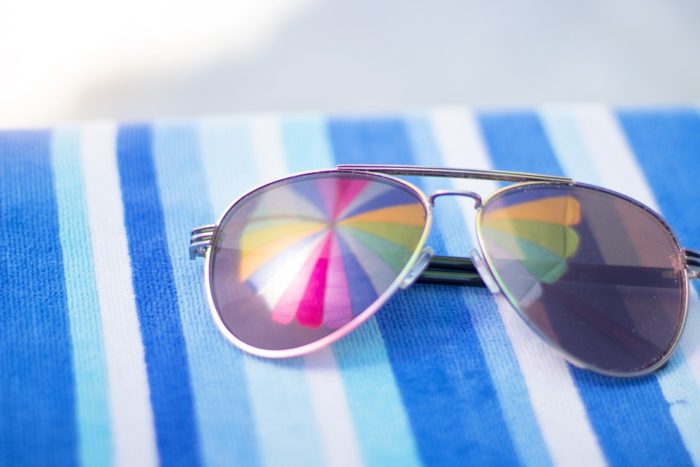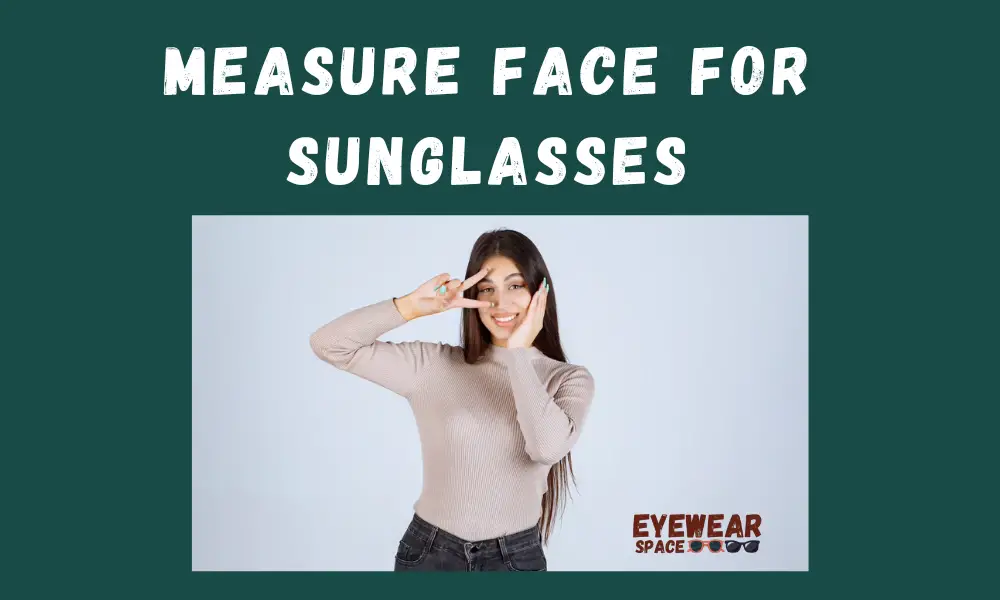Finding the right pair of sunglasses but don’t know how to Measure Face for sunglasses becomes increasingly challenging today.
Not only are they expensive but it’s tricky to find a pair that looks good on you!
More often than not, once you’ve found a pair that you adore, you discover that they’re out of step with your facial measurements and this can be frustrating.
Whether you’re shopping online or at department stores, it pays to understand and learn how to Measure Face for Sunglasses so that you can find fashionable products that fit well.
Although Measure Face for Sunglasses is a little tedious and technical to do, you must go through all the steps to measure your facial size when buying sunglasses to save time, money, and frustration.
This guide will show you how to Measure Face for Sunglasses properly so you can choose a pair that fits well and looks good on you.
How to Measure Face for Sunglasses
When measuring your face before purchasing a brand new pair of sunglasses, there are generally three sizes that you need to learn.
Take note that if you get these primary measurements right, you will have sunglasses that will fit like a glove and will suit your face best.
These are the eye size, bridge size, and temple size. Let’s go over these measurements one by one and in detail below.
First and foremost, and probably the most crucial is measuring the eye size.
The eye size is the horizontal width from the outermost edges of the lens taking into account the widest part of the lens usually measured in millimeters. This will determine how large and wide the lenses of the sunglasses will be.

Typically, most sunglasses come in 40mm for people who have small eyes to 60mm for extra-large frames.
Aside from your correct size, determining what eye size you will choose will also depend on your preference. Eye size also determines the overall appearance of your sunglasses.
If you want sunglasses with a more dramatic look and more coverage, then you can size up a few millimeters to achieve the look.
Conversely, if you want smaller lenses, you can size down one or two millimeters to achieve a minimal look that will still fit you properly.
When sizing down, however, make sure not to go overboard or you’ll end up losing coverage.
Your face and your style go hand in hand when it comes to finding the perfect pair and one way to pull off the best of both worlds are to find the perfect eye size.
The next thing that you have to measure is the bridge size. The bridge size is the distance between the two lenses of the sunglasses. This part is what connects the lenses together and sits over the bridge of the nose.
To measure this, start from the inner sides of the two lenses and measure the distance between those two points from one point to the other side of the bridge. Bridge sizes on sunglasses usually range from 14mm to 24mm.
This measurement depends on the size and height of your nose bridge—how narrow or wide it is and how high or low your nose bridge is.
If you have a narrow nose bridge, then the bridge size will also need to be smaller. On the other hand, people with wider nose bridges need a larger bridge size to compromise the distance.
You should also pay attention to the position of the bridge of the sunglasses.
If you have a lower nose bridge, look for a bridge that is located a little lower and arched down to clinch into your nose bridge thus providing you with a secure fit.
In contrast, if you have a high nose bridge, opt for sunglasses that have the bridge sitting higher and closer to the brows.
The bridge part is also typically made of small and thin plastic or metal construction designed to provide proper fit and comfort.
This is why it is vital that you get your correct measurement in contrast to when you’re choosing your eye size which you have more freedom.
The third thing that you need to do is to measure the temple size. The temple size is the total width of the arms of the sunglasses.
Start by measuring from the hinges to the end part of the arm on a straight line not following the curvature of the arms. This will be your temple size. This measurement can range from 120mm to 150 mm.
In general, unlike your eye size and bridge size, temple size comes in predetermined sizes. The longer your temple size is, the larger size you will need, and vice versa.
If you are unsure about which predetermined size you should go for, try out the sunglasses and if the arms lay past your ears and stick out, go for a size smaller.
However, if you notice that the curved part touches the back of your ear too closely, size up instead.
The shape of the frame is also a bonus point to consider. To know which frame shape will look best for you, you should first determine your face shape.
Your face shape can be round, square, oval, long, diamond, or heart-shaped. By simply knowing your face shape, you can choose a frame style that will flatter your face.
If you have round, oval, or long face shapes, frames that have sharper edges or even cat-eye frame shapes are your best friend.
People with square, diamond, or heart face shapes have a lot of sharp edges on their facial structure already so go for frames with rounded edges to soften out your appearance.
You might be surprised by how much difference it makes!

Final Thoughts
Measuring your face is important when selecting a pair of sunglasses.
The good thing is it doesn’t have to take months of trial and error and bucks from your wallet before you can figure out your size.
Knowing the correct measurements can help you avoid buying the wrong size and style.
Keep in mind that there will be some deviation when taking these measurements since each person’s face and preferences are different.
Sunglass manufacturers also provide their standard sizes, sizing charts, and guides so make sure to also take them into consideration depending on which brand you are eyeing.
What’s important is that you have a close estimate and a rough idea of what you need and want in your sunglasses.
I hope that by reading this article, you learned the fundamentals of how to Measure Face for Sunglasses properly.

